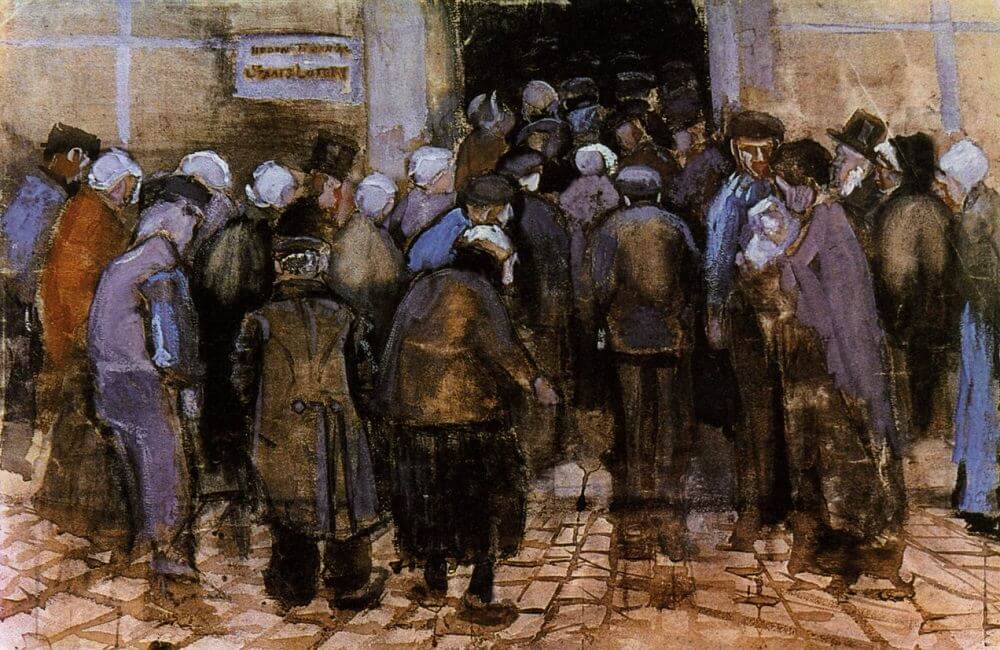The State Lottery Office, 1882 by Vincent van Gogh

Van Gogh's cousin the artist Anton Mauve (1838-88) had given Van Gogh some drawing lessons before his move to The Hague. Later when Van Gogh arrived in the city he again took up with Mauve, who initially helped him to find a studio. It was not long, however, before Van Gogh became involved with a local prostitute called Clasina Maria Hoornik (Sien), who was pregnant and already had a small child. The artist moved her and her family in with him and established some semblance of a domestic life. However, Van Gogh's family were appalled by the relationship, Mauve ceased to help him and he found himself ousted by members of the local community of artists. It was a relationship doomed to fail, and fraught with class issues for the artist, who struggled with the elitist attitudes of his contemporary cultural counterparts.
What is particularly evident in this painting is the suggestion that the group of huddled people milling around the lottery office could have spent their last pennies in a vain hope of winning. The figures are bowed and shuffling, and rather than a scene of expectant excitement, it is one of despondency.




















